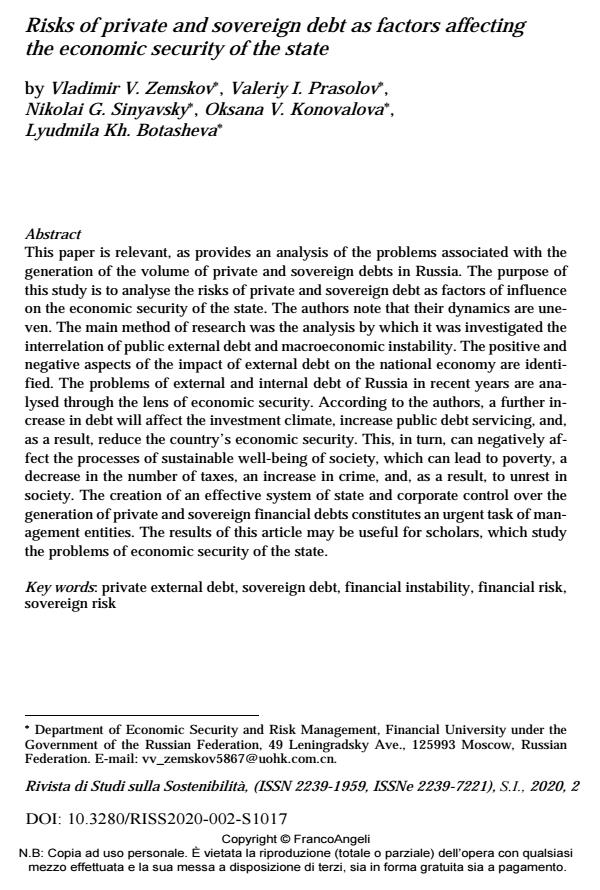Risks of private and sovereign debt as factors affecting the economic security of the state
Journal title RIVISTA DI STUDI SULLA SOSTENIBILITA'
Author/s Vladimir V. Zemskov, Valeriy I. Prasolov, Nikolai G. Sinyavsky, Oksana V. Konovalova, Lyudmila Kh. Botasheva
Publishing Year 2021 Issue 2020/2 suppl.
Language English Pages 15 P. 235-249 File size 191 KB
DOI 10.3280/RISS2020-002-S1017
DOI is like a bar code for intellectual property: to have more infomation
click here
Below, you can see the article first page
If you want to buy this article in PDF format, you can do it, following the instructions to buy download credits

FrancoAngeli is member of Publishers International Linking Association, Inc (PILA), a not-for-profit association which run the CrossRef service enabling links to and from online scholarly content.
This paper is relevant, as provides an analysis of the problems associated with the generation of the volume of private and sovereign debts in Russia. The purpose of this study is to analyse the risks of private and sovereign debt as factors of influ-ence on the economic security of the state. The authors note that their dynamics are uneven. The main method of research was the analysis by which it was inves-tigated the interrelation of public external debt and macroeconomic instability. The positive and negative aspects of the impact of external debt on the national economy are identified. The problems of external and internal debt of Russia in recent years are analysed through the lens of economic security. According to the authors, a further increase in debt will affect the investment climate, increase pub-lic debt servicing, and, as a result, reduce the country’s economic security. This, in turn, can negatively affect the processes of sustainable well-being of society, which can lead to poverty, a decrease in the number of taxes, an increase in crime, and, as a result, to unrest in society. The creation of an effective system of state and corporate control over the generation of private and sovereign financial debts constitutes an urgent task of management entities. The results of this article may be useful for scholars, which study the problems of economic security of the state.
Keywords: Private external debt, sovereign debt, financial instability, financial risk, sovereign risk
Vladimir V. Zemskov, Valeriy I. Prasolov, Nikolai G. Sinyavsky, Oksana V. Konovalova, Lyudmila Kh. Botasheva, Risks of private and sovereign debt as factors affecting the economic security of the state in "RIVISTA DI STUDI SULLA SOSTENIBILITA'" 2 suppl./2020, pp 235-249, DOI: 10.3280/RISS2020-002-S1017